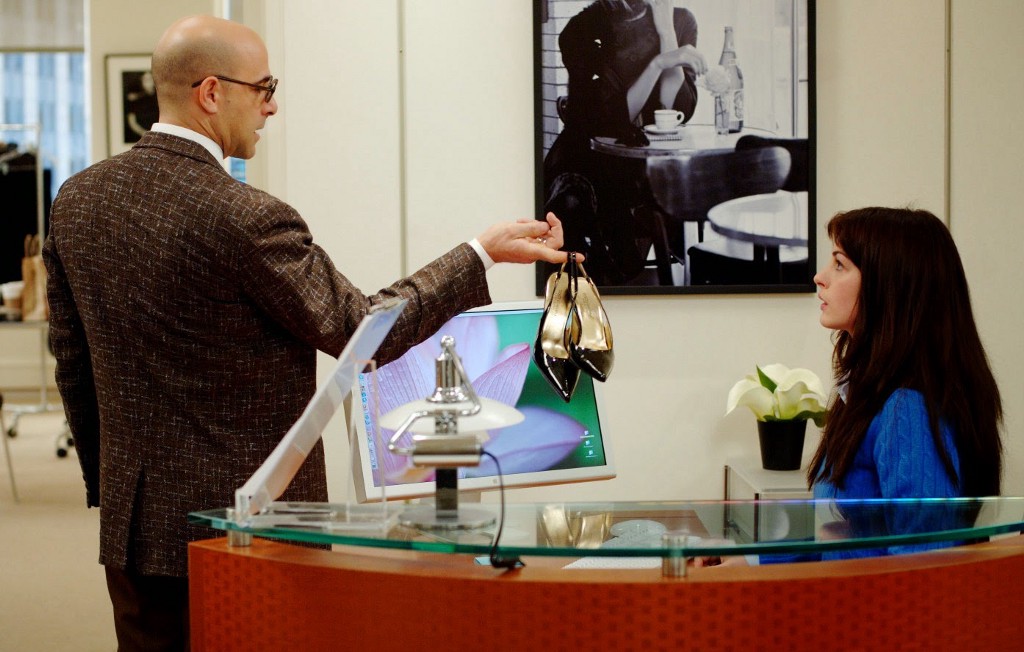Is Professional Clothing a “Want” or a “Need?”
And is it worth going into debt over?

I haven’t written a full-on Billfold post about it yet, but if you’ve been paying attention you might have noticed me casually mention things like “monthly clothing budget” and “taking bags of clothes to Goodwill,” so… I’ve kinda been upgrading my outfits, over the last few months.
I liked what I wore last year—enough to do a whole series of photos on my Old Navy flannels and thermies—but this year I’m spending more time interacting with people in a face-to-face, professional capacity, and I wanted to look the part.
What I Wore to Work From Home (and How Much it Cost Me)
So yeah, I have been reading every single one of those promotional emails my favorite retailers send me, and I have spent my money on the saleiest of sales days, and now my clothes—and my monthly haircut, which costs $54 including tip and which I love—reflect that investment.

Which is interesting, because yesterday the topic of “investing in your appearance, especially if you are a woman,” came up both on Gaby Dunn’s Bad With Money podcast and on The Cut.
On Bad With Money, Dunn interviews Cameron Esposito and Rhea Butcher, and Butcher explains that one of the things she learned from Esposito was that she needed to spend more money on clothes:
You invested in your wardrobe in a way that I hadn’t thought about before. I always really liked clothes and fashion and stuff and had always really been interested in it, but then I was realizing “oh, I’m wearing the same five shirts in these pictures, and it’s maybe not necessarily putting the best foot forward.” So, anyway, I just wanted to give you that compliment.
(I love listening to Butcher and Esposito casually mention how much they appreciate and care about each other.)
The conversation about clothes and professional image-making continues after that, and you’ll have to listen to the podcast if you want to hear the whole thing—start 42 minutes in if you just want the clothes discussion— but let’s jump over to The Cut:
How Can I Dress for My Fancy New Job Without Going Broke?
“One approach to affording these ‘evergreen’ pieces is to apply the 50/30/20 rule,” said Manisha Thakor, the director of wealth strategies for women at the BAM Alliance. “In an ideal world, 50 percent of your take-home pay goes towards ‘true’ needs — housing, transportation, essential food, insurance, mandatory debt paydown. After that, 30 percent goes towards ‘wants’ — all the fun stuff, including investment clothing and accessories. Then, 20 percent is savings for the future, like retirement and emergency funds. So if you have the funds available from your 30 percent discretionary pool, use them on these types of purchases.”
I have a lot of feelings about this, starting with “you can’t lump professional development spending in with discretionary spending.” I understand why you have to, sometimes—it’s often a variable expense that you can adjust up and down as your “more important” expenses increase or decrease—but I don’t see professional development, including work-appropriate clothing, as a “want.” I see it as a need.
Money Mom Charlotte Cowles advises this letter writer to avoid going into debt for her new wardrobe, but I’d say that if there was any time to carry a credit card balance for a few months, it’s this one. I’d suggest getting a zero-interest card and buying the clothes you need for your new position now, so you can have them on the first day. If you can afford $500 in clothing every month on your new salary, buy $2,500 in clothing now and pay it off over the next five months instead of taking nearly half a year to get your wardrobe into shape.
Also, I lol’d at the suggestion that you can save money on your new professional wardrobe by taking your old clothes to a tailor:
That might mean that you don’t even go shopping at all — instead, go through your closet, find the basics that are almost perfect but not quite, and haul your uniquely shaped butt to someplace that will make your clothes fit.
I mean, sure, if you’ve got a really great piece in there, do it—but we live in a world where old clothes start to show their wear really quickly, especially if you bought them on the cheap. Just get new stuff.
There’s also the anxiety that comes with trying to figure out what clothing to purchase, as Megan wrote about yesterday (wow, we really were all operating on some kind of clothing synchronicity):
The Cost of Finding A Dress To Wear To A Black Tie Optional Wedding
Dressing the part is much more fraught. I’m casual by nature, inclined to dress down for events out of a quiet sense of rebellion against societal rules that I find to be outdated and arbitrary. Participating in events that require an innate understanding of how one should be stokes a peculiar sort of status anxiety that never seems to go away. I’m old enough to know better, but I don’t know if what I know is correct.
I’ve often wondered what would happen if I turned myself over to a stylist, saying something like “I have $1,500 and here are the professional roles I will need to fulfill over the next four months, please dress me.” (First of all, if I only had $1,500, the stylist might laugh. One of The Cut’s fashion suggestions is a pair of $750 Ferragamo pumps.)
But when anxiety about clothing and status and money combine—plus the guilt you might feel over clothing being a “want” or a “frivolous expense”—it gets very hard to choose the right clothing to wear for whatever job you may be asked to undertake. Add in the expense, the budgeting required, and the choice you might have to make between going into debt now vs. putting off clothing purchases, and this whole business of dressing oneself becomes even more fraught. (I haven’t even gotten into the part where retailers only make clothing for a limited selection of body shapes and sizes.)
So… yeah. Clothes, money, professional development, wants, needs, debt, anxiety. Discuss.
Support The Billfold
The Billfold continues to exist thanks to support from our readers. Help us continue to do our work by making a monthly pledge on Patreon or a one-time-only contribution through PayPal.
Comments